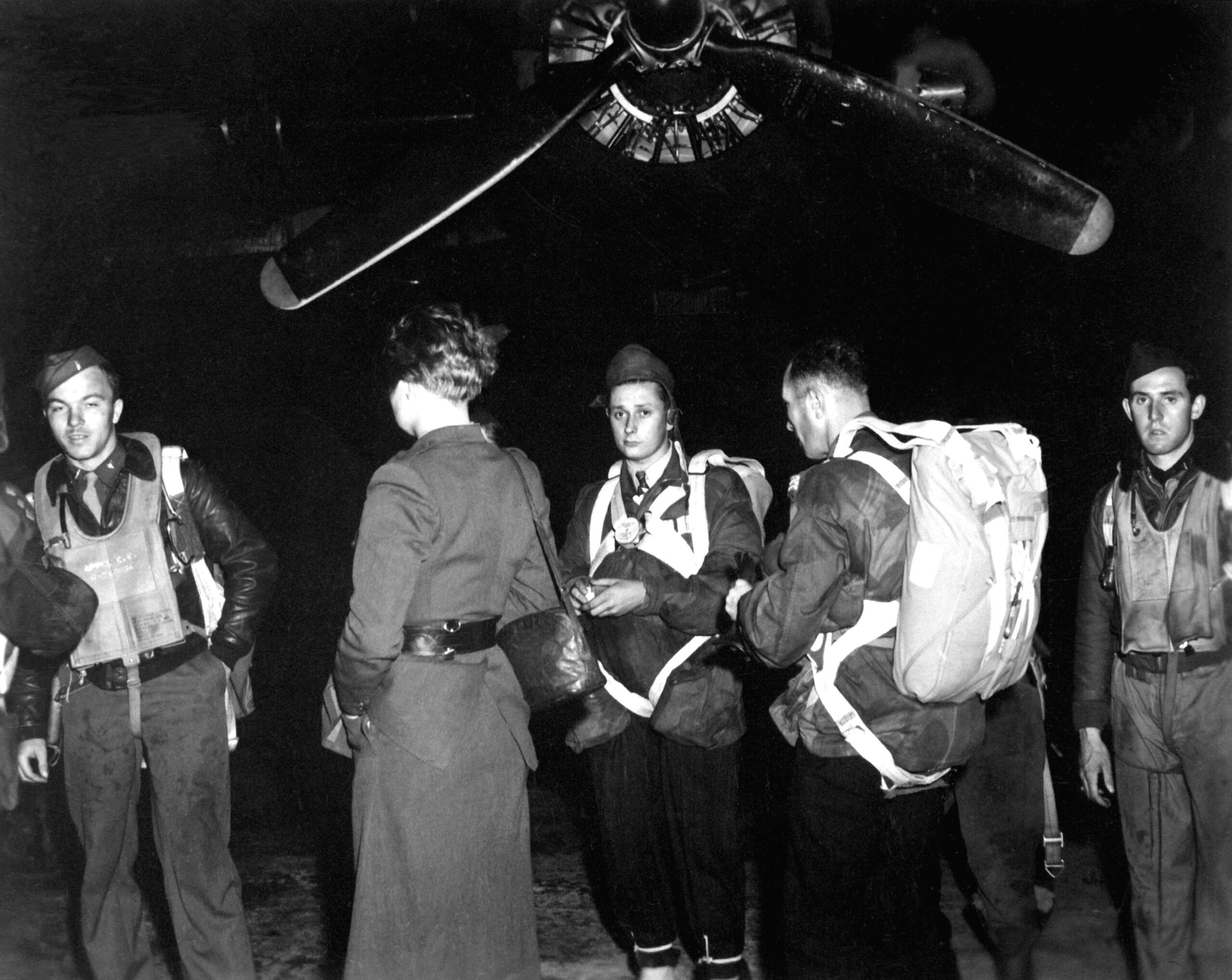Jedburghs in front of a B-24 prior to departure at Area T, Harrington Airdrome, England. Photo: U.S. Office of Strategic Services.
Operation Jedburgh was a clandestine operation during World War II, where three-man teams of operatives were dropped by parachute into occupied territories. These teams, known as the Jedburghs, were composed of members from the British Special Operations Executive (SOE), the U.S. Office of Strategic Services (OSS), the Free French Bureau Central de Renseignements et d’Action (Central Bureau of Intelligence and Operations), and the Dutch and Belgian armies in exile.
The primary objective of the Jedburgh teams was to assist allied forces who invaded France on 6 June 1944 with sabotage and guerrilla warfare, and leading local resistance forces in actions against the Germans. They were tasked with coordinating airdrops of arms and supplies, guiding local partisans on hit-and-run attacks and sabotage, and assisting the advancing Allied armies to defeat the Third Reich.
Origins
The concept of the Jedburghs was conceived in May 1943 by the British SOE and its American counterpart, the OSS. Unlike SOE agents who worked in occupied Europe, the Jedburgh teams were armed and uniformed military personnel. Fluency in the language of the European country where they would operate was required. Colonel H. A. A. Thackthwaite was the commanding officer of the Jedburgh teams and played a crucial role in planning and executing Operation Jedburgh. Major General William Joseph Donovan, known as “Wild Bill” Donovan, was the head of the Office of Strategic Services (OSS), the organization that oversaw Operation Jedburgh.
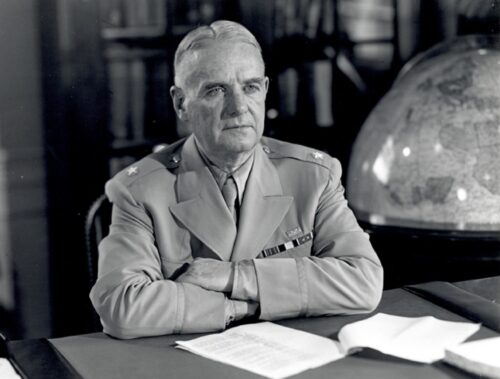
Operations
A Jedburgh team typically consisted of three members. However, some teams could have two to four members. The composition of a team was usually a combination of an American OSS officer, a British officer, a Free French officer or enlisted man, and sometimes a Belgian, Dutch, or Canadian soldier. One member of each team was always a radio operator. These teams were designed to conduct sabotage and guerrilla warfare in Axis-occupied territory as well as liaise between resistance groups and the Allied war effort.
The Jedburghs were dropped behind enemy lines under the cover of night. They were all volunteers, known as “Jeds”. Although their operations were primarily focused on Europe, their operations also extended to some Asian countries. Jedburgh operations in Asia were carried out under the authority of Lord Mountbatten. The motto of the Jedburgh teams was “Surprise, kill, and vanish”.
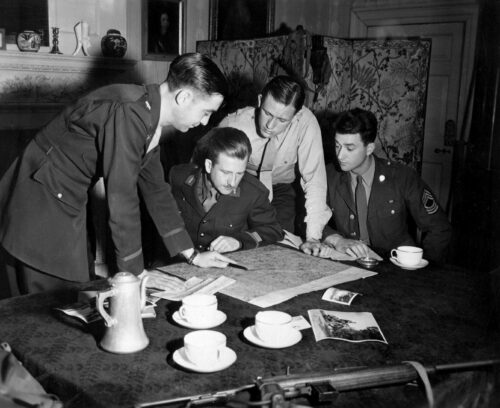
Selection and Training
Although women played a major role in the Allied victory in World War II, women were not recruited for Operation Jedburgh. The operation specifically sought male volunteers from the American and British military for this clandestine mission. The men on Operation Jedburgh, known as “Jeds”, were all volunteers. After a battery of physical and psychological tests, the men were selected for an assignment of which they knew few details.
The training of the Jedburghs was rigorous and comprehensive, designed to prepare them for the wide range of challenges they would face behind enemy lines. After about two weeks of paramilitary training at commando training bases in the Scottish Highlands, they moved to Milton Hall near Peterborough, which was much closer to the airfields from which they were to be launched.
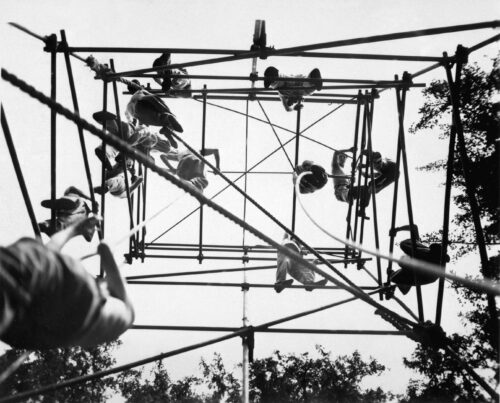
The teams received extensive foreign language instruction, as well as training in parachuting, amphibious operations, skiing, mountain climbing, radio operations, Morse code, small arms, navigation, hand-to-hand combat, explosives, and espionage tactics. This diverse skill set was crucial for their survival and effectiveness in occupied territories.
The training of the Jedburghs was a testament to the seriousness and complexity of their mission. It equipped them with the skills needed to operate behind enemy lines, coordinate with local resistance forces, and carry out sabotage and guerrilla warfare.
Legacy
Operation Jedburgh represented the first real cooperation in Europe between SOE and the Special Operations branch of OSS. Itt set a precedent for future special operations in various military contexts. The multi-national teams were trained in irregular warfare, maintained extensive foreign language skills, and excelled at subterfuge, sabotage, and surveillance.
The bravery and dedication of all Jedburghs, both known and unknown, played a significant role in the success of Operation Jedburgh and ultimately, the Allied victory in World War. Their bravery and effectiveness set a standard for future special operations teams and their legacy continues to influence military strategy today.
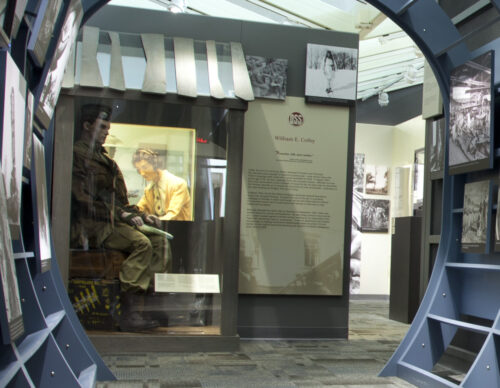
Resources
Office of Strategic Services Society
OSSSociety.org
USASOC OSS Website (Official US Army Website)
www.soc.mil/OSS/index.html
International Spy Museum
SpyMuseum.org
Central Intelligence Agency
CIA.gov
*The views and opinions expressed on this website are solely those of the original authors and contributors. These views and opinions do not necessarily represent those of Spotter Up Magazine, the administrative staff, and/or any/all contributors to this site.

